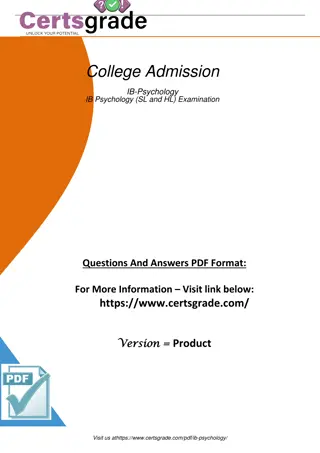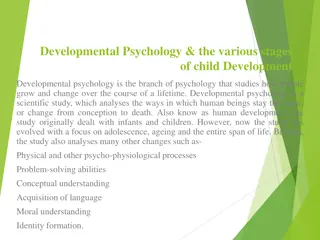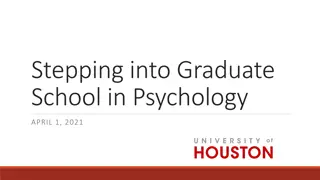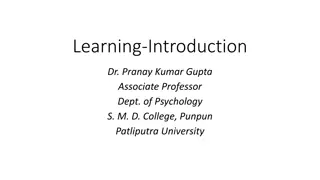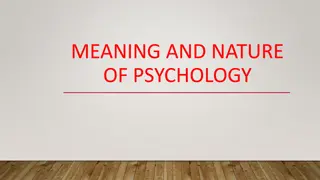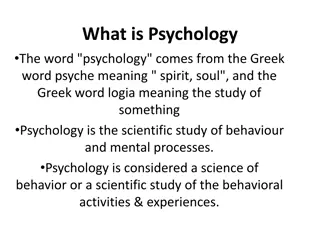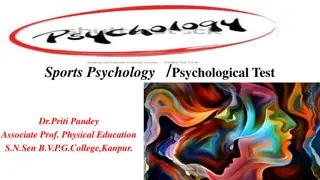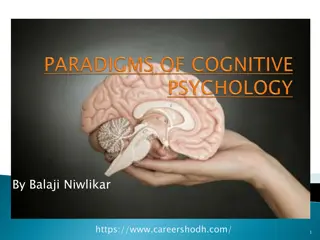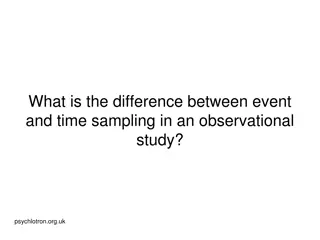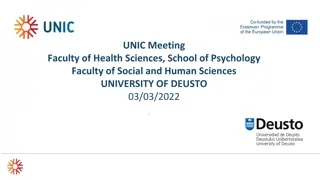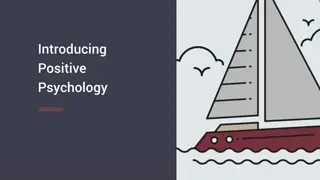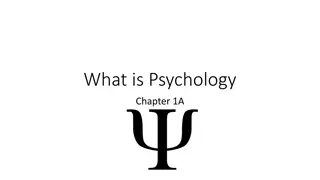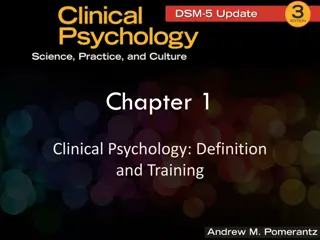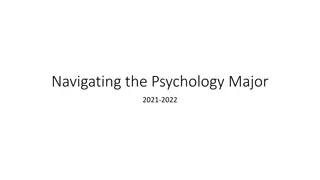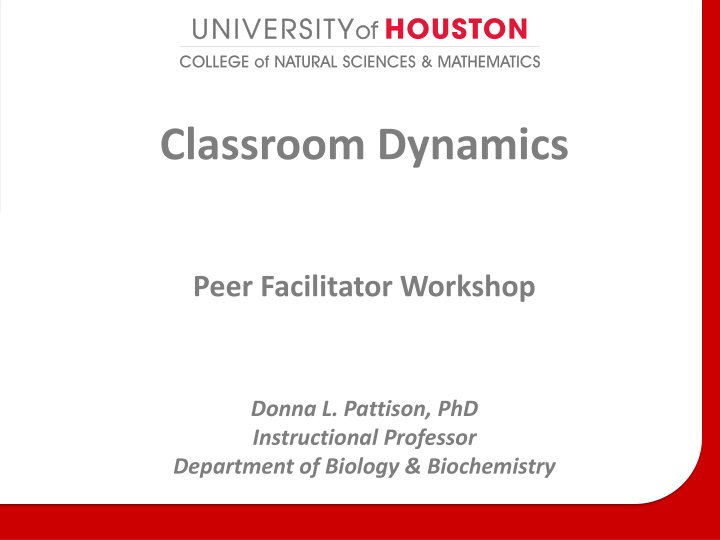
Classroom Dynamics and Student Needs
Explore the impact of unmet physiological needs and abusive home situations on student learning, the characteristics of a self-actualized individual, the role of universities in student development, and the influence of positive and negative school experiences on self-perception and goal achievement. Delve into Bloom's Taxonomy of Cognitive Development and ways to classify questions based on different levels for effective learning outcomes.
Download Presentation

Please find below an Image/Link to download the presentation.
The content on the website is provided AS IS for your information and personal use only. It may not be sold, licensed, or shared on other websites without obtaining consent from the author. If you encounter any issues during the download, it is possible that the publisher has removed the file from their server.
You are allowed to download the files provided on this website for personal or commercial use, subject to the condition that they are used lawfully. All files are the property of their respective owners.
The content on the website is provided AS IS for your information and personal use only. It may not be sold, licensed, or shared on other websites without obtaining consent from the author.
E N D
Presentation Transcript
Classroom Dynamics Peer Facilitator Workshop Donna L. Pattison, PhD Instructional Professor Department of Biology & Biochemistry
http://miraclemind.com/investors/newsletter/?a=2008_5_5; retrieved 10/15/2012
What impact does unmet physiological needs have on learning? What impact does abusive home or relationship situations have on learning? As a peer facilitator, will you know if these are issues for your student? What campus resources are available for you to direct your students to if you become aware of a student s needs? http://miraclemind.com/investors/newsletter/?a=2008_5_5; retrieved 10/15/2012
What are the characteristics of a self- actualized individual? What is the role of the university in helping students become self-actualized individuals?
The Cycle of Growth Create a cycle depicting the impact on a positive school experience on an individual s perception of self and subsequent goal setting and achievement. Create a cycle depicting the impact of a negative school experience on an individual s perception of self and subsequent goal setting and achievement. Use sticky notes for the blocks. You may use as many blocks in the cycle as you need. Compare the cycles from different blocks to create one graphic for the class of both positive and negative feedback cycles. Hamachek, Don. (1990) Psychology in Teaching, Learning, and Growth. (4th edition) Allyn and Bacon: Boston, p. 65
Blooms Taxonomy of Cognitive Development http://projects.coe.uga.edu/epltt/images/1/1e/Bloom_1.jpg; retrieved 10/16/2012
http://www.redwoods.edu/Departments/Distance/Tutorials/BloomsTaxonomy/Blooms-http://www.redwoods.edu/Departments/Distance/Tutorials/BloomsTaxonomy/Blooms- Taxonomy.jpg; retrieved 10/16/2012
Activity 1) Classify each question on the worksheet (in the folder on the website) by what level of Bloom s Taxonomy they represent. 2) Which types of questions are easiest to write as the instructor? 3) Which questions are easiest for students to answer and study for? 4) Which questions are students likely to struggle with and why? 5) How will you help your students recognize what types of questions they are struggling with and adapt their strategies accordingly?


